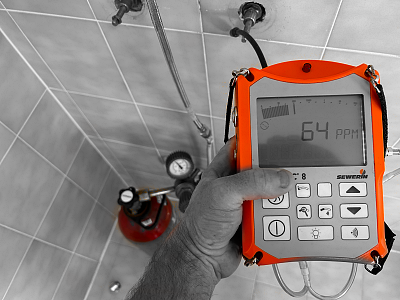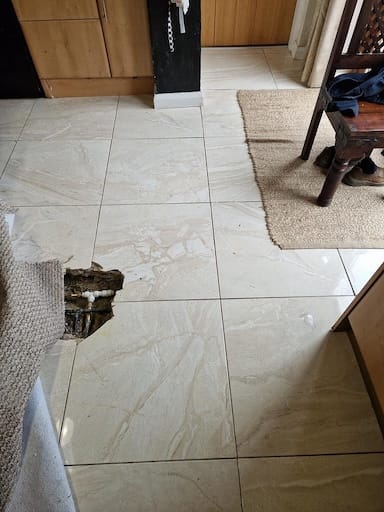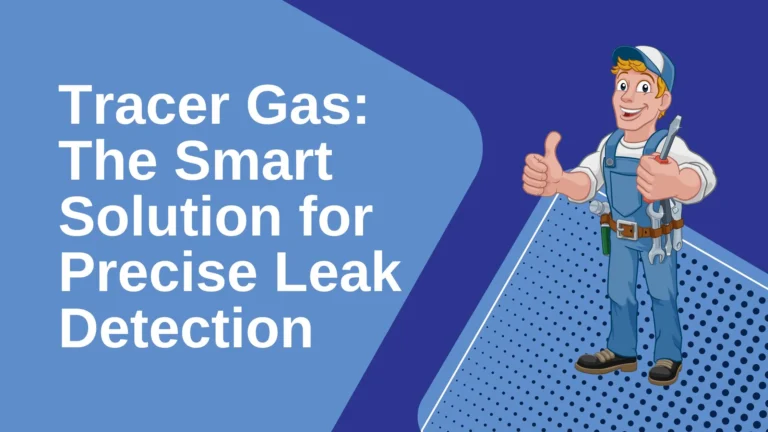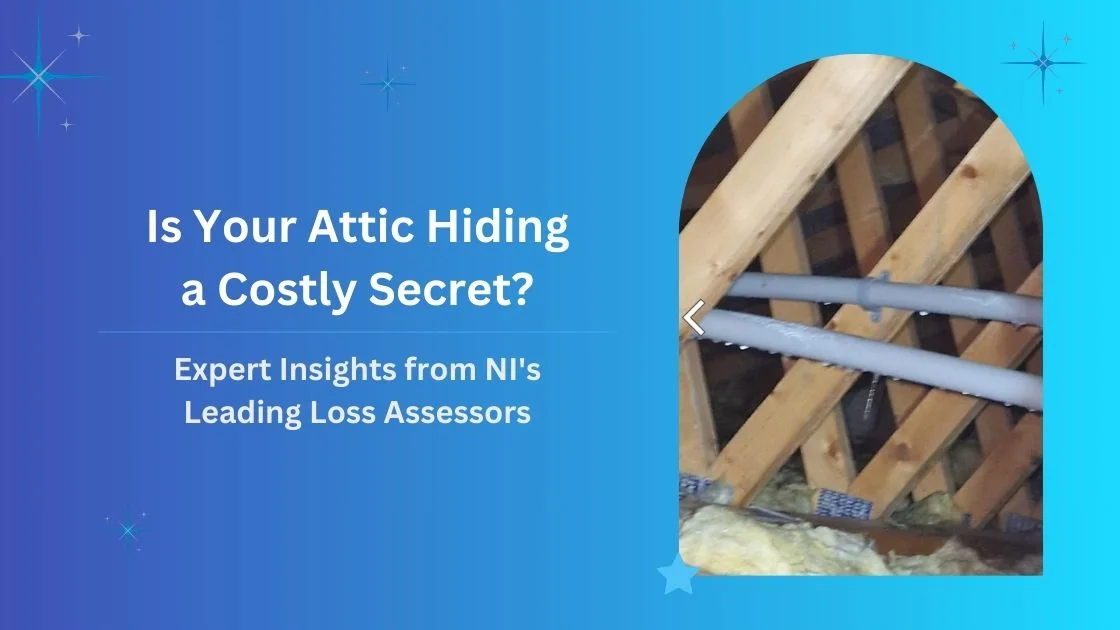UK plumbers frequently use tracer gas as an innovative method for precise leak detection, helping to identify leaks quickly and efficiently without causing damage. Understanding this advanced technique highlights its benefits in maintaining plumbing integrity.
Water leaks in domestic plumbing systems can lead to significant damage and costly repairs, particularly when the pipes are embedded in concrete floor slabs. In the UK, many older homes have copper piping systems that are susceptible to wear, corrosion, and other forms of damage over time.
Identifying the exact location of leaks in copper pipes buried beneath concrete can be a daunting task. One of the most advanced and effective methods for locating these leaks is the tracer gas technique.
In this article we’ll discuss the tracer gas approach which is used for detecting leaks in copper pipes beneath concrete floor slabs. We’ll share what this method involves, the equipment required, its best use cases, as well as its advantages and disadvantages.
Key Takeaways
- Tracer gas leak detection uses a hydrogen-nitrogen gas mixture to locate leaks in copper pipes under concrete slabs.
- It is highly accurate and non-invasive, making it an ideal method for detecting leaks in hard-to-reach or complex plumbing systems.
- While it can be more expensive than some alternatives, the long-term savings on repairs and property damage often make it a cost-effective choice.
What is Tracer Gas Leak Detection?

Tracer gas leak detection is a highly sensitive and non-invasive technique used to locate leaks in various plumbing systems, including copper pipes embedded in concrete floor slabs. It involves introducing a safe, non-toxic gas mixture—usually a combination of hydrogen and nitrogen—into the plumbing system.
The gas mixture is lighter than air and small enough to escape through tiny leaks that water or air may not readily pass through. Once the tracer gas is introduced into the pipes, a specialised gas detector is used to locate the areas where the gas escapes, indicating the presence of a leak.
This method is highly effective for detecting even the smallest leaks in copper pipes. The use of tracer gas has become increasingly popular because it offers a non-invasive solution, meaning that there is no need to excavate or damage the concrete slabs before confirming the location of the leak.
How Does Tracer Gas Leak Detection Work?
The process of using tracer gas to detect leaks in copper pipes is straightforward but requires specialised equipment and expertise. Below are the key steps involved:
1. Isolating the Water Supply
Before tracer gas can be introduced into the system, the water supply to the pipe network must be turned off and the pipes are drained. This ensures that the gas can travel freely through the pipes and escape at any leaks.
2. Introducing the Tracer Gas
A mixture of hydrogen (usually around 5%) and nitrogen (95%) is injected into the pipe system. The hydrogen component is extremely small and light, allowing it to escape through even tiny leaks in the copper piping. Nitrogen serves as a carrier gas and ensures the safe transport of hydrogen throughout the pipe system.
3. Detecting the Escaping Gas
After allowing the gas to permeate the pipe system, a sensitive gas detection tool is used to “sniff out” areas where the tracer gas is escaping. These gas detectors are designed to identify even small concentrations of hydrogen in the air, enabling precise detection of leaks.
4. Locating and Marking the Leak
Once the gas detector identifies the highest concentration of escaping tracer gas, this indicates the exact location of the leak. The plumber then marks the area for repair. This approach avoids unnecessary damage to floors, walls, or concrete slabs by precisely identifying the leak’s location.
Equipment Needed for Tracer Gas Leak Detection
Successful tracer gas leak detection requires specialised equipment, as well as professional expertise in using these tools.
1. Tracer Gas Injector
This tool introduces the hydrogen-nitrogen gas mixture into the plumbing system. It must be calibrated to ensure the correct ratio of gas is injected into the pipes.
2. Tracer Gas Mixture
The gas mixture typically consists of 5% hydrogen and 95% nitrogen. This ratio is selected for safety and efficiency. Hydrogen is chosen because it is the smallest molecule and can escape through even minute cracks, while nitrogen acts as a carrier and ensures the safe handling of the hydrogen.
3. Hydrogen Gas Detector
The key piece of equipment in the tracer gas method is a hydrogen gas detector. This sensitive device can detect even the smallest concentrations of hydrogen gas in the air, allowing for precise location of the leak. The device may feature a probe or wand that is moved over the surface of the floor slab to detect gas escaping through the concrete.
4. Pressure Testing Equipment
Before introducing the tracer gas, it’s common practice to conduct pressure testing to ensure that there is indeed a leak in the system. This involves using a pressure gauge and valves to check if the pressure in the pipes drops over time, indicating a leak.
When is Tracer Gas Leak Detection Best Used?
Tracer gas detection is highly versatile but is particularly useful in specific situations. Understanding when this method is most effective helps ensure that the right leak detection technique is chosen.

1. Locating Small or Hard-to-Find Leaks
Tracer gas is extremely effective at finding small leaks, particularly those that are too minor to be detected through other methods such as acoustic detection or thermal imaging. The tiny hydrogen molecules can escape through the smallest of cracks, making this method ideal for pinpointing hard-to-find leaks.
2. Non-Invasive Detection in Concrete Slabs
When copper pipes are embedded in concrete floor slabs, traditional leak detection methods often require invasive techniques, such as drilling into the concrete. Tracer gas, on the other hand, allows for non-invasive leak detection. By detecting gas that escapes through the concrete, plumbers can avoid unnecessary damage to the property.
3. Complex Pipe Layouts
In some properties, the plumbing system may involve complex pipe layouts that make it difficult to determine where a leak is originating from. Tracer gas can be introduced into the entire system, making it easier to detect leaks regardless of how convoluted the pipe network may be.
4. Detecting Leaks in Areas with Poor Accessibility
For leaks occurring in areas that are difficult to access—such as beneath floors, behind walls, or within concrete slabs—tracer gas is particularly effective. The gas can travel through the entire system and escape at the leak site, even if the leak is in a hard-to-reach area.
Advantages of Tracer Gas Leak Detection
| Advantage | Description |
|---|---|
| Highly Sensitive | Can detect even the smallest leaks, making it more accurate than many alternatives. |
| Non-Invasive | Does not require excavation or drilling into concrete slabs. |
| Safe and Non-Toxic | The gas mixture used is non-toxic and safe for both the environment and humans. |
| Effective in All Conditions | Works in noisy environments, cold water systems, and areas with poor accessibility. |
The tracer gas method has several advantages over more traditional leak detection techniques. These benefits have made it a popular choice for detecting leaks in copper pipes under concrete slabs.
1. Highly Sensitive and Accurate
The tracer gas method can detect even the smallest leaks that other methods might miss. Hydrogen, being the smallest molecule, easily escapes through microcracks in the pipe and can be detected in minute concentrations by the gas detector. This accuracy helps minimize the area that needs to be excavated for repairs.
2. Non-Invasive
Since the tracer gas method allows leaks to be detected through concrete, tiles, or other floor coverings without the need for excavation, it is significantly less invasive than traditional methods. Homeowners benefit from reduced property damage and lower repair costs.
3. Safe and Non-Toxic
The hydrogen-nitrogen mixture used in tracer gas detection is completely safe and non-toxic. Hydrogen is a naturally occurring gas that is non-flammable at the low concentrations used in this method. Nitrogen, meanwhile, is an inert gas that poses no risk to health or safety.
4. Works in Difficult Conditions
Unlike some leak detection methods that are influenced by environmental factors (e.g., noise interference with acoustic detection or temperature variations affecting thermal imaging), tracer gas is effective even in challenging conditions. It can be used in noisy environments or on cold water systems where thermal imaging would struggle to detect leaks.
Disadvantages of Tracer Gas Leak Detection
| Disadvantage | Description |
|---|---|
| Higher Initial Cost | Specialised equipment and gas mixture can increase upfront costs. |
| Requires Professional Expertise | Proper use and interpretation require skilled technicians. |
| Slower Gas Dispersal | Gas may take time to reach the surface if the leak is deep within a material. |
| Less Effective in Poor Ventilation | May struggle in airtight or confined spaces where gas cannot disperse easily. |
While tracer gas detection offers numerous benefits, there are some limitations that should be considered before deciding to use this method.
1. Higher Initial Cost
Tracer gas leak detection can be more expensive than other methods due to the specialised equipment and gases required. This cost may be higher than traditional methods such as pressure testing or acoustic detection, particularly for minor leaks or straightforward pipe layouts.
2. Requires Professional Expertise
Using tracer gas effectively requires trained technicians with expertise in leak detection. Misuse of the equipment or incorrect interpretation of the gas detector readings can lead to false positives or undetected leaks, making it essential to hire a professional with experience in this method.
3. Gas Dispersal Time
Although tracer gas can detect leaks quickly once it escapes from the pipe, there may be a delay in dispersal if the leak is buried deeply within concrete or other materials. This can slow down the detection process compared to methods like thermal imaging, which provides near-instantaneous feedback.
4. Less Effective in Poorly Ventilated Areas
In areas with poor ventilation, the tracer gas may not disperse as effectively, making it harder to detect leaks. This is particularly relevant for buildings with confined spaces or airtight construction, where the gas may accumulate in the pipe system rather than escaping into the surrounding environment.
Comparison with Other Leak Detection Methods
To understand where tracer gas stands in the spectrum of leak detection methods, it’s important to compare it with other commonly used techniques.
1. Acoustic Leak Detection
Acoustic detection relies on the sounds generated by water escaping from pipes. While this method is effective for large leaks, it may struggle to detect smaller leaks or leaks located deep within concrete slabs. Additionally, acoustic detection is highly susceptible to background noise, making it less effective in noisy environments. Tracer gas, on the other hand, is unaffected by noise and excels at detecting small leaks.
2. Thermal Imaging
Thermal imaging is highly effective for detecting leaks in hot water systems by identifying temperature differences in the floor or walls. However, it is not as effective for cold water leaks, where no temperature anomaly is present. Tracer gas, by contrast, works equally well for both hot and cold water systems, making it a more versatile solution in mixed plumbing systems.
3. Pressure Testing
Pressure testing is a basic method for determining whether a leak is present by measuring pressure loss in the system. While it confirms the presence of a leak, it does not provide any information about the leak’s location. Tracer gas detection can both confirm the presence of a leak and pinpoint its exact location, making it a more comprehensive solution.
| Method | Advantages | Disadvantages |
|---|---|---|
| Tracer Gas Detection | Highly accurate, non-invasive, works in all conditions | Higher initial cost, requires professional expertise |
| Acoustic Leak Detection | Effective for large leaks, non-invasive | Affected by noise, less effective for small leaks |
| Thermal Imaging | Effective for hot water leaks, non-invasive | Ineffective for cold water systems, affected by ambient temperatures |
| Pressure Testing | Confirms leak presence, simple | Does not provide leak location, invasive if follow-up repairs are required |
Case Studies and Statistics
According to a report from Water UK, an estimated 5% of older homes with copper piping systems experience leaks each year, with many leaks originating from pipes buried in concrete floor slabs. The use of tracer gas detection has grown in popularity due to its accuracy and ability to detect leaks without invasive methods.In a case study from a domestic property in Manchester, a homeowner noticed increased water bills and damp patches on their concrete floor. After unsuccessful attempts to locate the leak using traditional methods, a plumber introduced tracer gas into the system. Within 30 minutes, the gas detector identified a small crack in a copper pipe buried beneath the concrete slab. The area was excavated, and the repair was completed without unnecessary damage to other parts of the property. The homeowner saved approximately £1,500 in repair costs by avoiding extensive excavation.
Conclusion
Tracer gas leak detection is an advanced, non-invasive method that offers exceptional accuracy when locating leaks in copper pipes, particularly those buried beneath concrete floor slabs. Its ability to detect even the smallest leaks, combined with its safe and non-toxic gas mixture, makes it a valuable tool for both homeowners and plumbers. While the method does come with some drawbacks, such as higher initial costs and the need for professional expertise, the benefits of avoiding unnecessary damage and ensuring precise detection often outweigh these challenges.
By understanding when tracer gas leak detection is best used and how it compares to other methods, homeowners can make informed decisions about the most appropriate solution for their plumbing issues. As the demand for non-invasive, reliable leak detection methods continues to grow in the UK, tracer gas is likely to remain a popular and effective choice for detecting leaks in copper piping systems.



